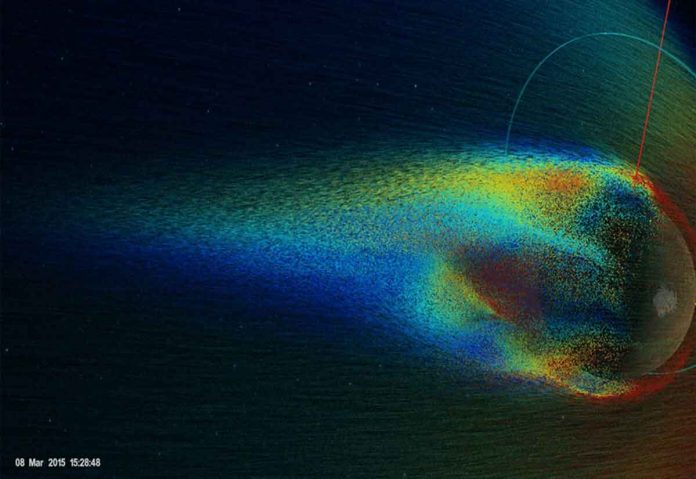Planetary scientists have developed evidence indicating that Mars was home to a relatively thick atmosphere. It hosted liquid water on its surface during the Noachian which was around 4 billion years ago. Significant climate change occurred since then. It results in the loss of the planet’s atmosphere and all of its surface water.
A thin envelope consisting largely of carbon dioxide is what remains of the atmosphere today. Without a protective planetary magnetic field this is being stripped away by the solar wind. NASA’s Mars Atmosphere and Volatile Evolution spacecraft has tracked the escape of the atmosphere’s most abundant ions.
Scientists attempted to extend these observations to carbon. This is the second most abundant element in the atmosphere. A complicating factor in observing the atmosphere’s carbon ion loss is that carbon is similar in mass to the dominant species oxygen. Scientists used 40 orbits of data collected by MAVEN’s Suprathermal and Thermal Ion Composition (STATIC) instrument.
STATIC registers particle impacts with a small range of masses. The distribution is centered on the true mass of a given ion. C+ and O+ have similar masses and these distributions overlap. The contributions from the oxygen ions are and removed before the C+ population can be ascertained. Scientists described a multistep process to accomplish this.
Scientists applied their method to data collected by STATIC in April 2018. This was an initial assessment of the technique. It was a first approximation of the escape rate of C+. Scientists estimated C+ flows away from Mars with a flux on the order of 104–105 per centimeter squared per second down the magnetotail. The study is consistent with previous model-derived estimates of carbon loss from the atmosphere. It is lower by 1–2 orders of magnitude than the observed loss rate for oxygen ions.
STATIC found detectable C+ fluxes in about a quarter of all observations. This illustrates the persistent difficulty of disentangling the two most abundant components of the atmosphere of Mars. Stories of carbon and oxygen in the current atmosphere will be a future task with implications for the history of Mars climate.

